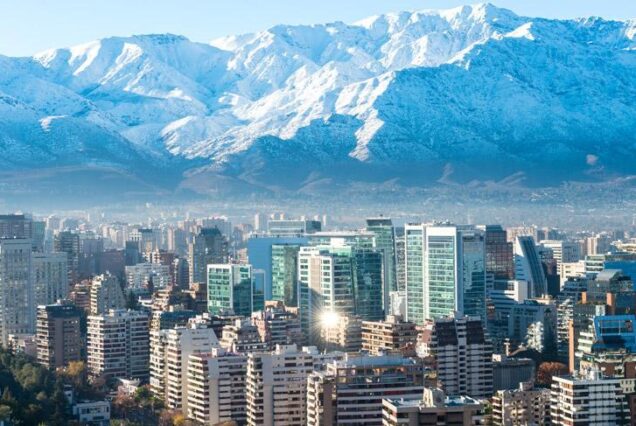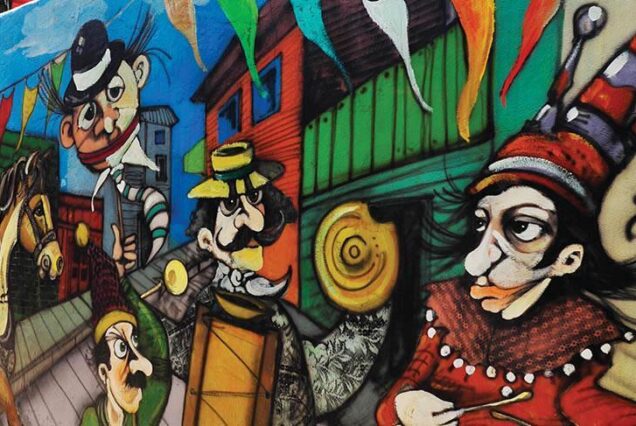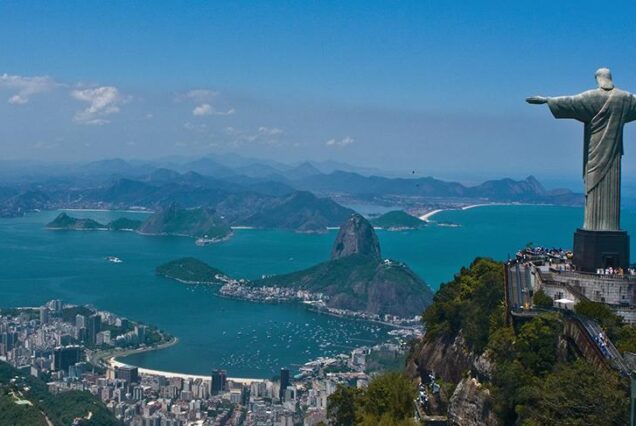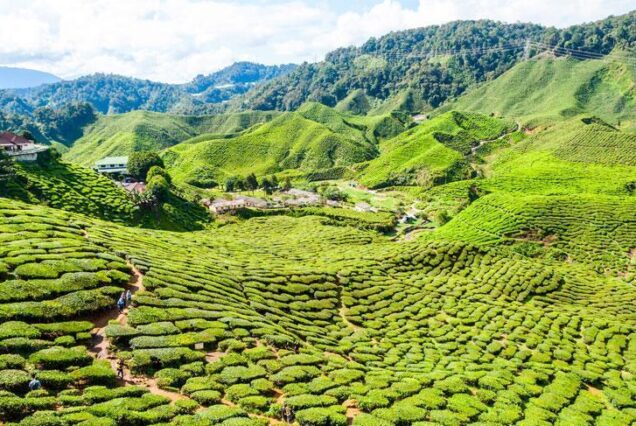This website uses cookies so that we can provide you with the best user experience possible. Cookie information is stored in your browser and performs functions such as recognising you when you return to our website and helping our team to understand which sections of the website you find most interesting and useful.
Cuba Travel Advice
With over 7,000 miles of sparkling coastline, Brazil has a countless selection of beaches to explore. With a country this large, you can be guaranteed to find your perfect one. Are you buzzing to feel the excitement of one of the most famous beaches in the world? Or do you want to lounge in a hammock with only the sound of the waves as company? Brazil has all of the above and everything in between. Here’s our pick of the best beaches in Brazil.
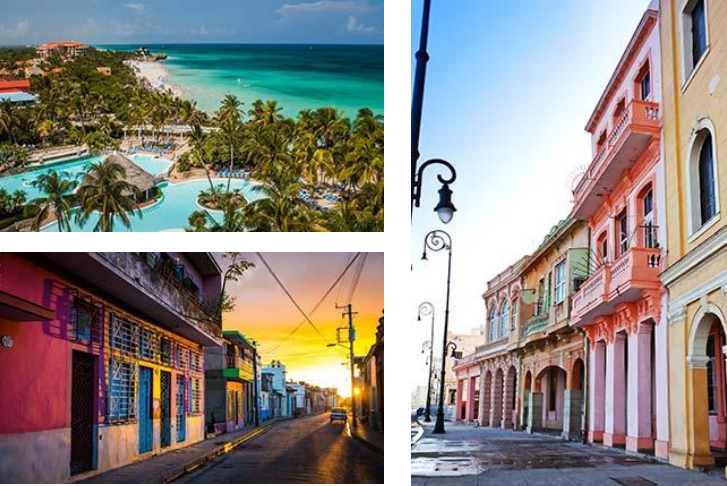
Getting to Cuba
Cuba, otherwise known as the ‘Pearl of the Antilles’ is a vibrant, lively and unique Caribbean island which has captured our hearts for generations. It lies in the middle of Central America, near Jamaica and the Dominican Republic and is the largest island in the Caribbean. Here are a few estimates for flight times when travelling to Cuba:
- London to Cuba will take around 9 hours and 45 minutes
- Los Angeles to Cuba takes around 7.5 hours
- New York to Cuba takes around 3.5 hours
- Sydney to Cuba will take around 40 hours with a stop over
Main airports in Cuba
Cuba has an astonishing 10 international airports. The main ones are Aeropuerto Internacional Jose Marti (HAV) in Havana, Antonio Maceo Airport (SCU) in Santiago de Cuba, and the Juan Gualberto Gómez International Airport (VRA) in Varadero.
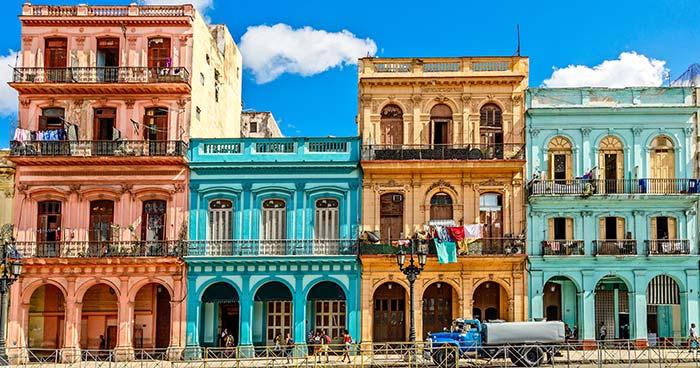
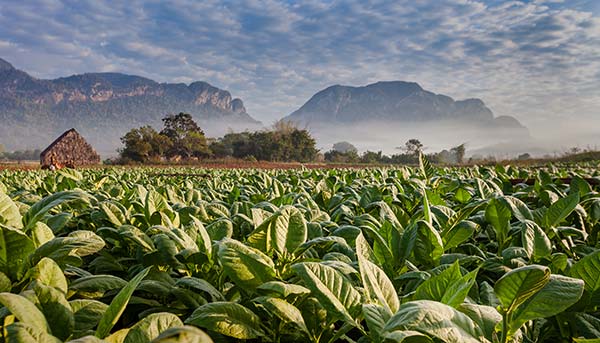
Geography & landscape of Cuba
Many people visit Cuba for the paradise beaches and the buzzing city life, but there is so much more waiting to be discovered. Outside of the cities, Cuba’s countryside is built on gentle rolling hills, rugged tobacco landscapes and glorious mountains. There are also a handful of archipelagos for some incredible island hopping!
Culture & religion
Cuba has more irreligion than most other Latin American countries and was an official atheist state from the 1950’s to the early 1990s. Those who do follow a faith are predominantly Roman Catholics which is around 59% of the population. 23% are either agnostic or atheist and a mixture of other religions total up the rest.
Cuba’s goal was to be an egalitarian society and by the 1960s women made up half the population of previously male dominated jobs. The roles of working and childcare is said to be split between a couple, however Cuba is seeing more single, young mothers take on both roles. It is now common for a household to include three generations of women who look after the children and work.
Hospitality is very important in Cuba, so you will usually find yourself in the hands of welcoming, generous hosts. They are very passionate people with an open culture so it is not seen as disrespectful to show affection, argue or complain in public. They also tend to have minimal household security so that their doors are always open to guests. Greeting women is usually done with a single kiss on the cheek and a firm but friendly handshake for a man.
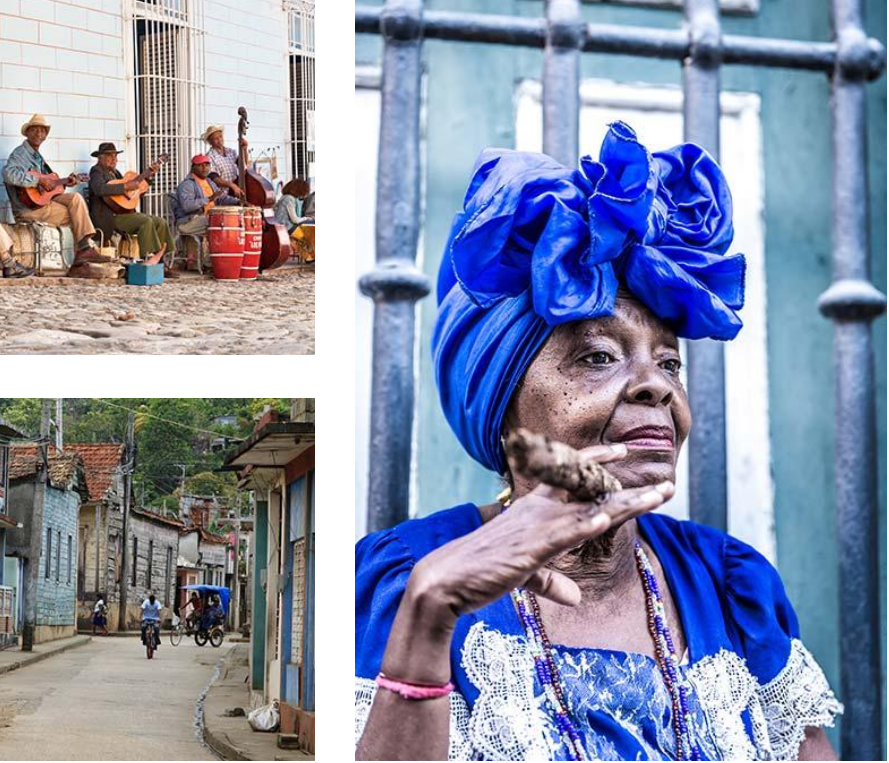
Languages spoken in Cuba
The official language of Cuba is Spanish (Cuban Spanish) which has around 11,000,000 native speakers. The next language to be largely spoken in Cuba is Haitian Creole which is used by around 300,000 Haitian Cubans. Other languages spoken in Cuba are Lucumi, Galician and Corsican. If you stay within the major cities and resorts you’ll find that most people will speak English. However in rural areas they tend to only speak Spanish, so it’s worth learning a few key terms!
Capital city of Cuba
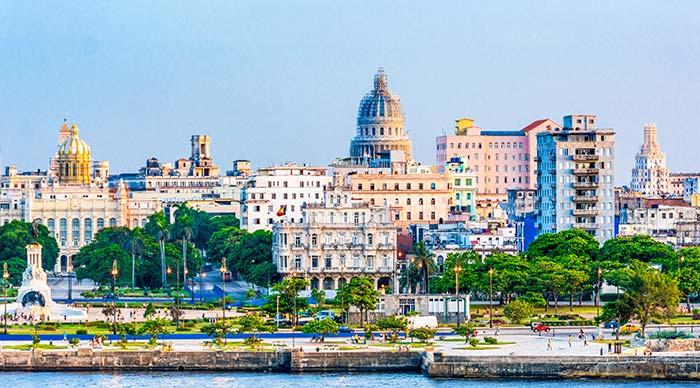
Havana
The capital city of Cuba is Havana (La Habana) which is situated on the island’s most northern coast. Havana is the largest city in the Caribbean, has one of the biggest major ports in Cuba and is the country’s largest commercial hub.
Visas for Cuba
Most nationalities do require a visa to visit Cuba – this includes the UK, some EU countries, Canada and Australia – the USA is a separate matter which you can read about below. Everyone will also need at least 2 months left on their passport. If you do need to obtain a tourist visa (known as a tourist card), you can apply for one by post (you can find the form here). This will grant you a visit of 30 days as long as you show proof of accommodation and a return flight.
Information on new regulations for US travel to Cuba
On June 4th 2019 it was announced that further restrictions for U.S travellers will come into effect. Please note it is still legal to travel to Cuba as a U.S citizen.
U.S travellers wishing to visit Cuba must travel under a general license so that OFAC know that your time in Cuba is spent in a meaningful way and will benefit the people of Cuba. The “People to People” general license was revoked as of the 4th June 2019 therefore the best option for U.S travellers is now the “Support for the Cuban people” category.
You should note that the general licenses do not require you to submit any application or paperwork. You will be asked to “self certify” the category in which you will travel under and you must declare this to whoever asks, be that the airline, travel agent, border official etc. If you have booked a tour you should have documentation and your itinerary present so that you can show how your time will be spent.
You will still need a Cuba Visitor Visa, which is a requirement of the Cuban government. This is separate to the general license. You can purchase this visa at the airport or with the airline you are travelling with.
The General License for Support for the Cuban People
Below is a summary of the requirements for travelling under this license.
You should use privately owned businesses only. This is Casa Particulares (B&B’s), and private restaurants (paladares)
Your schedule should include lots of interaction with the local people and show to support the society in Cuba.
Tips for complying to the rules for the general license for Support of the Cuban People
Book guided tours Eat at private restaurants.
Visit privately owned shops and purchase items.
Book lessons (dance or language).
Spend time with your Casa Particulares host.
Visit museums, and places of historic significance.
Document your activity and keep all receipts.
Cuba Tours for U.S citizens with Tucan Travel.
U.S travellers are able to join any of our group or tailor-made tours that visit Cuba. The tours have been carefully designed to meet the requirements of the general license “Support of the Cuban People” and you will take part in various educational and cultural activities that promote interaction with the Cuban people. You do not need to apply for the license and Tucan Travel will assist you with the process of ensuring that your travel complies.
FAQ
Do I need a visa to visit Cuba as a U.S citizen?
Yes. All travellers need a Cuba visitor visa. You can purchase this via the airline you will travel to Cuba with. We can also send you a Cuban visa directly to your U.S. address in advance of your travel for $85. Just indicate you want a visa included when you book with us and we will mail it directly to you.
How do I apply for the general license?
You do not need to apply for the general license. You simply need to have the appropriate documentation to show your itinerary for Cuba and state the category you will travel under to whichever officials ask.
ATMs & Money in Cuba
Cuba is very much a cash society, and you will most often need to use local currency (CUC’s) to pay for goods and services. Know your currency! Familiarise yourself with the dual Cuban currency system in Cuba early on. Currently there are two official currencies in circulation in Cuba: Cuban Convertible (commonly referred to as CUC): 1CUC = $1USD (not including any exchange fees) Cuban Peso (commonly referred to as CUP): 24CUP = 1CUC. The Cuban Government fixes the exchange rates for both currencies, and they are subject to change at any time. The only currencies you are guaranteed to be able to change in Cuba are Euro’s, GBP and CAD. You will also have the opportunity to exchange USD, however the Cuban Government will surcharge an additional 10%, so we recommend against doing this (same for travellers cheques).
Throughout Cuba there are official currency exchange houses called CADECA’s, located in cities, larger hotels and at airports. CADECA’s and banks allow foreigners to exchange foreign cash to CUC’s, make cash advances on credit cards (Visa & MasterCard) and exchange travellers cheques (you will need your passport to do this). There is a 3% commission for the bank included in the exchange rate they convert at. There is a CADECA at the airport, so you can obtain CUC immediately upon arrival in Cuba. Also at the airport, at the end of your time in Cuba, you can change your left-over CUC (as they are worthless outside of Cuba) to another currency. We recommend that when you travel to Cuba, you bring notes that are in good condition, as faded or damaged notes can be difficult to exchange. Also, try and bring notes in smaller denominations (lower than USD$100).The ATMs (Automatic Teller Machines), work in Cuba for most Visa branded cards, but not for MasterCard branded cards. There is an ATM on the upper level of the Havana airport. You can expect to be able to access ATMs in Havana, Varadero, Vinales, Camaguey, Trinidad, Cienfuegos and Santiago de Cuba. You will need a pin number on your credit card to be able to use the ATM machines. If you want to use a MasterCard to withdraw funds, you will have to go inside a CADECA or bank to do so. Credit Cards linked to US banks or financial institutions will not work in Cuba. Occasionally there appears to be some problems with using certain types of Visa cards for Cash Withdrawals (Travelex and Citibank Visa’s both do not work in Cuba). For this reason we advise our travellers to travel to Cuba with alternate forms for obtaining cash, as a safety blanket if your credit card doesn’t work.
CUP’s are the local Cuban Peso and have limited use for travellers. Local Cubans use this currency to buy goods from ration stores, as well as a few other limited products. It might be a good idea to obtain a small amount of this currency from a CADECA to purchase items such as ice cream and pizzas. Your tour leader can help you with this decision. Before deciding to travel to Cuba, it is important for travellers to be aware of this dual currency and be able to recognise the difference (something your tour leader can help you with).
Vaccinations & travel health
The WHO and the CDC recommend for the following routine vaccinations to be up to date when visiting Cuba: hepatitis A, hepatitis B, typhoid, cholera, yellow fever, rabies, meningitis, polio, measles, mumps and rubella (MMR), Tdap (tetanus, diphtheria and pertussis), chickenpox, shingles, pneumonia and influenza. Dengue is aso a risk in Cuba. Although it was one of the few places which thankfully avoided the Zika outbreak, it is still vitaly important to bring mosquito repellant.
Is it safe to drink tap water in Cuba?
The tap water in Cuba is not safe to drink – stick to bottled water.
Electricity & plugs in Cuba
The standard voltage in Cuba is 110V however most modern hotels have sockets for 220V. All standard US and UK appliances will work with an adapter. The sockets and plugs in Cuba are type A, B, C and L. Type A fits two straight prongs, type B fits 3 straight prongs in a triangle shape, type C fits two round prongs and type L fits 3 round prongs in a line.
Emergency calls
- 104 is the number for the ambulance service
- 105 is the number for the fire service
- 106 is the number for the police service
Travelling as a single woman in Cuba
Locals don’t tend to travel much especially as single women, so a solo woman traveller will stand out and you will receive some attention. Most of this however is unthreatening. As long as you politely but firmly state your disinterest, touts and jineteros will move on. Be aware of people stopping you on the street to show you something like ‘the best bar in town’. Scammers often try to trick tourists into an unofficial, expensive tour with a hefty price tag.
Regarding crime, Cuba is on the whole pretty safe, but that doesn’t mean there isn’t any. Petty theft is fairly common in high tourist areas such as the Malecon in Havana – as with any other major city. So only take out as much cash as you need and keep it well hidden and secure. As a woman, you will no doubt receive some form of catcalling and wolf whistling during your time in Cuba. It is very common whether you are a local or a tourist but is generally non-threatening.
Wifi and internet access
Wifi is available in Cuba but probably not to the extent that you are used to at home. Connectivity in Cuba can be scarce and quite slow. The speed will be perfectly fine for browsing web pages and booking tickets but you may have trouble watching videos.
Cuba’s internet access is rapidly improving though and they now have over 700 wifi hotspots. In order to connect with one of these you will need to purchase an internet card and pay for the amount of hours of internet you need. Cards can be picked up from any ETSECA office.
Time zone
Havana (CDT or GMT-4) is 5 hours behind London, 3 hours ahead of Los Angeles and runs on the same time as New York. Cuba runs on Cuban Daylight Time and it does observe Daylight Savings Time. Visit timeanddate.com to calculate the time difference from your current location.
Travelling around Cuba
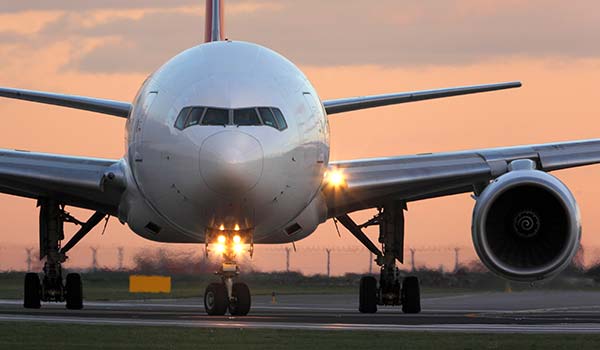
Aeroplane
Flying tends to be the quickest mode of transport when travelling long distances in Cuba as there are numerous domestic airports around the island. Most tourists tend to buy their plane tickets through travel agents or online. This is however, the most expensive option.
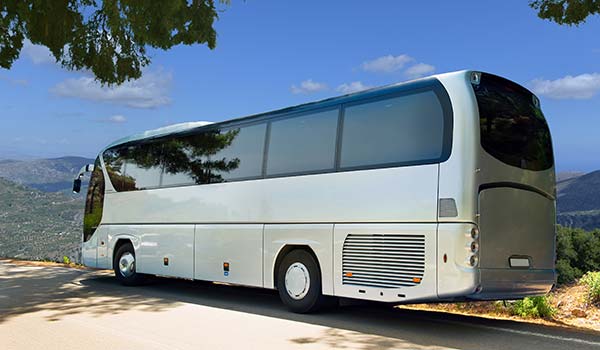
Bus
Catching a bus is one of the most popular choices for travelling between towns. Viazul is particularly favoured amongst tourists. The buses are comfortable, not too expensive and reliable. They are pretty popular however, so we do recommend booking your tickets well in advance.
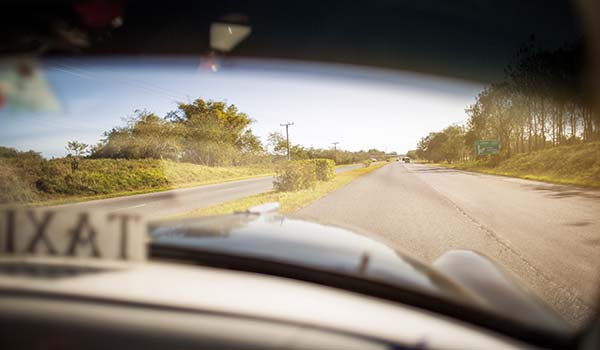
Taxi
Taxis are generally one of the best ways to get around, especially within the cities. Most taxis are metered and should cost around $1, plus $1 for each kilometer travelled, or the driver will try to negotiate a flat rate.
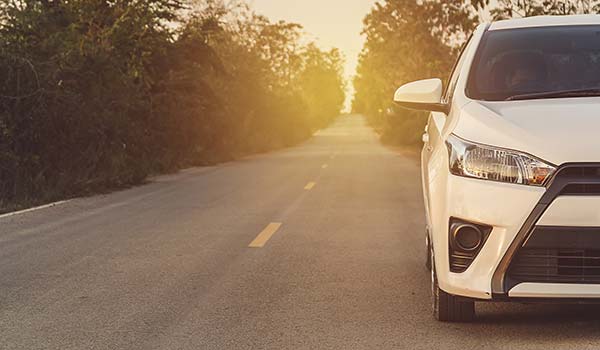
Car Hire
Many tourists dream of hiring a car to explore Cuba and it is probably the easiest way to travel, however, it doesn’t come cheap! The average cost is around $70 a day with insurance, fuel, the deposit and extras on top.
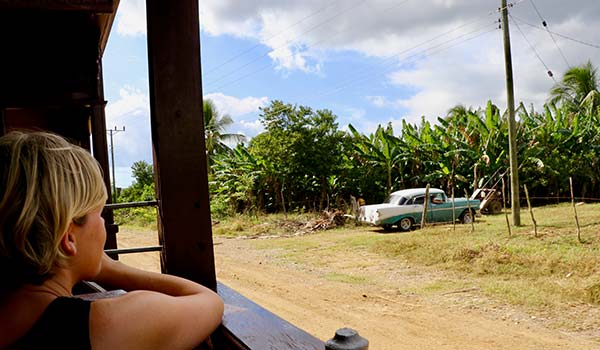
Train
Trains are a great way to travel around Cuba as long as you aren’t on a strict time limit! They tend to be pretty slow and old but are perfect for relaxing and taking in the views. You can generally get a train to most areas, but you can only purchase a ticket from the departure station within 5 days of the travel date.
History
Christopher Columbus discovered Cuba in 1492 and claimed the land for Spain. The country was inhabited by indigenous tribes who farmed vegetables, grains and tobacco. Cuba was then seized by Diego Velasquez who built many of the important cities still standing, including Havana. Whilst the indigenous tribes fell ill due to unfamiliar diseases brought over by the Europeans, the Europeans began importing African slaves into Cuba to work the plantations.
There began a movement in Cuba to fight for independence, and when a plantation owner decided to free his slaves, a long war to freedom began. The ten year war ended in dismay until a second war began in 1895. A peace treaty was eventually made and Cuba finally gained its independence in 1902.
The repercussions of the wars left Cuba poor, but by the 1950s the standard of living was higher and the health care and education systems were much stronger. In 1952 Fidel Castro became dictator and Cuba became a communist country, economically dependent on the Soviet Union. Lots of people fled from communist Cuba to America, many not making it. Fidel Castro resigned in 2008 and handed power over to his brother Raul.
Since Raul came into power, Cuba has slowly been changing. People are allowed to buy, sell and lease their homes and Cuba’s relationship with the US became amicable again. However, since Donald Trump became the US president, strains between the two countries have resurfaced.
We are passionate adventure travelers who want to share the world and our travel experiences with everyone…
